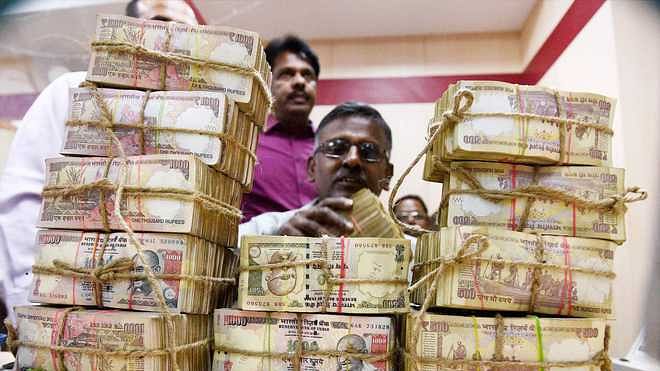Black or white, where has the money of this country gone, is a question every Indian should be asking. Especially because now, with the coronavirus taking its economic toll, this is a very important query.
“’To relieve the country from the grip of corruption and black money, there is a need to take another strong step. Presently in use five hundred rupee and thousand rupee currency notes will no longer be legal tender from midnight tonight, that is 8th November 2016,” said Prime Minister Narendra Modi as he announced demonetization of two high-value currency notes to curb corruption and flush out black money from the countries’ rich and powerful.
Summarizing the objectives of the move, the PM had added that the step would strengthen the hands of the common man in the fight against corruption, black money and fake currency and put down terror funding.
Celebrities and political leaders in droves voiced their support for the pronouncement and some even described the prime minister’s announcement a ‘historical masterstroke’. However, most sensible people across the country immediately understood Modi’s economic game was intended for political benefits but everyone was afraid to voice opposition, scared they would be targeted as hoarders of black money.
West Bengal Chief Minister and leader of Trinamool Congress Mamata Banerjee and Delhi Chief Minister Arvind Kejriwal were the first leaders to condemn the move, citing the devastating effect it was having on the lives of poor citizens of the country.
As the people thronged empty ATMs and cashless banks, chaos unfolded on the streets. The drive that started against black money suddenly changed to Cashless Economy. Companies like Paytm and others surfaced to fill the void created by the cash crunch. There were daily television announcements of change in policies regarding the old currencies. To compound the problem, new currency notes were not made available for a long duration of time.
To regain the confidence of the people, Modi made a highly emotive speech on November 13 in Goa, asking people to grant him 50 days to restore normalcy. Otherwise, he said, they could burn him alive. As the goals set for demonetization–bringing out black money and eradicating corruption– failed to create any tangible results, the goalposts also kept shifting. From corruption, counterfeit notes and terror funding, the rhetoric began to centre around making India a digital and cashless economy, widening the tax base and formalising the country’s economy.
Some of the celebrities and politicians who gave a thumbs up to Modi’s currency policy adventure backtracked from previous statements when news leaked that as much as 99.3 per cent of the junked Rs 500 and Rs 1,000 notes returned to the banking system. This indicated that just a minuscule percentage of currency was left out of the system after the government’s unprecedented note ban. All this while, no one bothered to question PM Modi about the old currency notes left in Nepal, Bangladesh, Thailand and other neighboring countries which had constant trade with India and accepted payments in Indian rupees. Those notes were never accepted back by the Indian government.
Four years on, today, many small and informal sector businesses and industries still lie shattered. They are yet to recover from the twin blows of demonetization and the unplanned and hurried introduction of Goods and Service Tax (GST).
Every ‘nationalistic’ Indian supported the objectives stated by the PM. Eliminating the scourge of black money and corruption, flushing out counterfeit notes and choking terrorist funding sounded very pleasant to the ears of those Indians. But taking into consideration the financial and human cost of the move, demonetization turned out to be a body blow to the poorest of the poor Indian and has damaged the economy so gravely that it has not yet recovered.







































